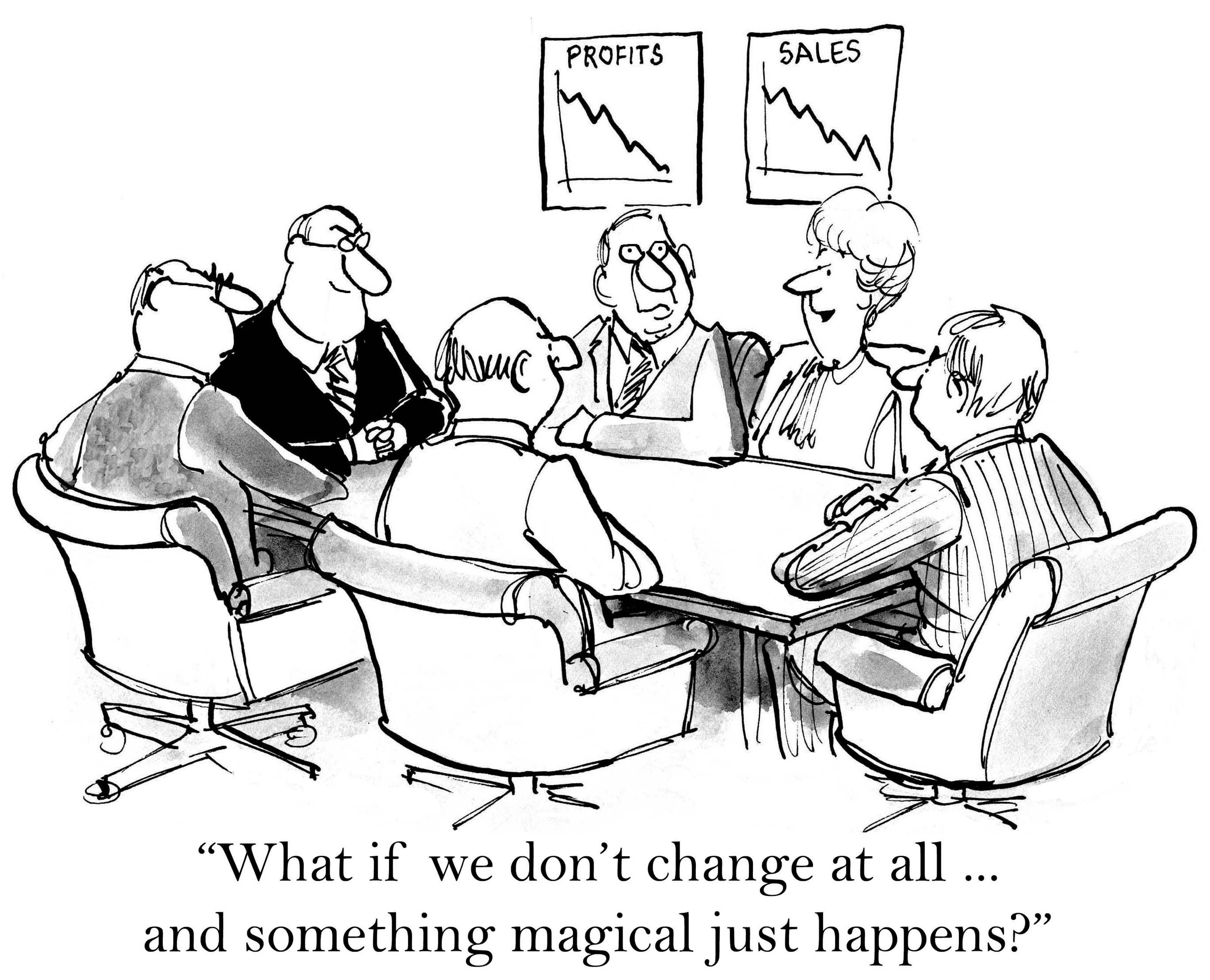Are your employees happy at work? I hope so. And you should hope so, too.
Here’s why you should care if your employees are happy.
In an ideal world, all employers would care about their employees’ happiness simply because they value life and respect their staff. However we all know that too often employers are more obsessed with the bottom line than employees’ quality of life. They are always asking, what’s in it for me? instead of asking, what’s in it for us a team? Many employers put profits before people, hoping that their business will be more successful as a result of their prioritization of money over what really matters the most in life: people.

Fortunately for employees, a business’ bottom line is inextricably intertwined with employees’ quality of life. Employers who value their people more than profits will be rewarded with greater profits. This is the ultimate win-win scenario. If you believe in karma, this could be considered proof that good deeds are repaid with more goodness.
Researchers at the University of Warwick found that happy employees are 12% more productive, while unhappy workers proved 10% less productive. Positive emotions appear to invigorate human beings, explained the researchers.
Happy employees are not only more productive, they are also more likely to continue working for the organization. They’re happy so why would they leave? They probably won’t, and that’s a good thing for everyone.
If you’re the type of boss that likes to passively threaten your employees by reminding them that everyone is replaceable, you might not care if your employees stay or leave. In fact, you might be happy to see disengaged employees walk out the door. If you’re that type of employer, you probably also prioritize profits over people. Luckily for you, you can learn to genuinely care about your employees, even disengaged employees, and still stay focused on your profits.
Experts estimate it costs upwards of twice an employee’s salary to find and train a replacement, according to The Wall Street Journal.
The math is simple; if you’re a small business paying an employee $40,000 a year, when that employee leaves, you can expect to spend at least $80,000 to find a replacement. So the saying is true; everyone is replaceable, but that doesn’t mean that finding a replacement is a painless, positive experience.
When an employee leaves, their projects and daily tasks are either neglected or the workload is shuffled to other employees. When the workload of an ex-employee is dumped on a current employee, the current employee’s quality of work is likely to decline as a result of juggling the job of two people.
In addition, all, or most, of the knowledge the ex-employee gained over their time with your organization is now lost. Once you finally find a new employee, you will need to invest time and resources to train them. And unfortunately, many new hires quickly learn their new position is not a good fit, which means you have to start the hiring and training process all over again. This is all money down the drain.
Instead of flushing money down the drain, invest that money in retaining employees for the long term. Invest in your employees without obsessing over whether or not that investment will return to you, just have faith and do the right thing. Research proves the odds are stacked in your favor that your investment will return to you in a variety of ways.
How To Create A Happy Workplace
Hopefully we are all the same page now, embracing the fact that happiness matters in the workplace. Happiness is no longer a luxury that can only be enjoyed during free time. Happiness can and should now be a priority at work as well.
But, how? How can a workplace lead to happiness for employees?
Many people would rightfully say that happiness comes from within. This is true – to a point. Inner happiness should always be a goal for all people, however everyone should also be able to enjoy the outer world as well. We should not have to cultivate inner joy in spite of our workplace environment; our workplace should contribute to our happiness.
To help you create a work environment that contributes to the happiness of your employees, consider these tips, and try the ones that are a good fit for your organization:
Give Compliments
– 82% of polled employees are more satisfied with their jobs when they receive recognition, according to a recent study.
– In addition, a Harvard University study determined positive reinforcement has the ability to improve performance.
To keep your staff happy and doing great work, tell your employees, good job, or something similarly encouraging on a regular basis. Even if an employee is struggling with their tasks, don’t withhold positive feedback until they have overcome all obstacles. Give them a morale boost by acknowledging something positive about them. For example, you can recognize their positive attitude, their persistence, or their willingness to tackle a challenge.

If you’re somewhat of a scrooge, you might scoff at the idea that everyone deserves a pat on the back or what some people mockingly call a participation ribbon, however why would you be upset about being positive? It costs you nothing, but can bring you great rewards in the form of more productive employees, and as a result – greater profits.
Not only does positivity not cost you anything, it can actually save you some real, cold hard cash when you are negotiating compensation with your staff. Studies found that employees who are shown appreciation for their work expect less compensation for their efforts.
And remember, the employees who are struggling are probably aware that they are struggling, and therefore they need a morale booster more than employees who are experiencing the thrill of success. Keep this in mind especially if you find yourself regularly acknowledging the efforts of your A players in front of the rest of team.
Every now and then, turn your attention to the staff members who need some extra encouragement. Give your B players a pat on the back in front of the rest of the team. Not only will the B players appreciate the acknowledgment, but they will especially appreciate being recognized in front of their colleagues. And you never know – your B players might be the next rising stars if you just show them a little love.
Give Power
To create a happy workplace, look for opportunities to let your employees own critical or innovative projects within your organization. Don’t live in fear. Find joy in watching other people within your organization succeed and shift paradigms.
Why?
– Studies show that employees are happiest when engaged in difficult-but-doable activities.
– In addition, Harvard Business School professor Teresa Amabile and psychologist Steven Kramer studied diaries from nearly 12,000 work days and discovered that the happiest and most productive days were those marked by a sense of progress.
So, what does this mean?
– It means that your employees will be happiest when you, at least occasionally, let them tackle some of the toughest challenges within your organization.
– In addition, it means that the projects you hand off to your employees should ideally lead to noticeable changes within the company.
Most employees will eventually become disengaged and unhappy if their days are spent on the same-old projects, with no opportunity for significant growth or impact. However many employers are constantly fearful that if they empower their employees, the employees will leave for a better opportunity once their new power has brought them to the next tier of success. Employers also worry that their staff cannot rise to the challenge, and will fail to properly manage important projects.
Here is my responses to that fear:
If you empower employees and also create a happy workplace, most employees will stay with you for the long term, and they will also use their power in a positive way to help you rake in the rewards for your company. You are more likely to lose top talent to a better opportunity if you don’t empower them. Considering that, you are really left with only one choice: give your employees your trust and let them take the reigns in meaningful ways.
If your fear comes true, and you empower employees who in turn take their recent successes and leave for another organization, don’t let that scare you from empowering employees in the future. Instead, add the employee who recently exited to your list of allies. You empowered them, they got a better opportunity, and therefore you are probably their favorite boss ever. As a result, you now have a new ally at a new organization. Lucky you.
Lastly, don’t worry that an employee will mismanage an important job. Instead, spend less time worrying, and more time developing and training your staff. When you train your staff to take on new responsibilities, or even a new role, you are minimizing the risk of burnout. According to Fast Company, happy employees don’t stay in one role for too long. Movement and the perception of improvement create satisfaction. Status quo, on the other hand, creates burnout.

Give Flexibility
80 to 90 percent of the U.S. work force would like to work remotely at least part time, according to Inc.com.
A recent article by Fortune explained the value of flexibility for workplace happiness:
One meta-analysis involving over 400,000 people in 63 countries found that autonomy and control over one’s life matters more to happiness than money. In a work context, this requires a sense of control over your work, but — just as important — over your time too. Flexibility is key, and employees with flexible work schedules report better well-being than those with less control over time and place.
Flexible work schedules and flexible work environments (working remotely) is a hot debate topic among many professionals, and that is understandable. Not every organization or employee is a good fit for flexible working arrangements, however studies point to the potential benefits that employees and employers can reap from flexibility.
For example, when Ctrip executives let their staff work from home, they saw a dramatic increase in performance: 13.5% more calls were made, employee turnover decreased by 50%, employees logged more hours, took fewer sick days, and were much happier on the job.
The potential spike in productivity and overall positive results has inspired many employers to embrace some form of flexibility within their organizations. In 2014, 50% of U.S. workers had jobs compatible with some remote work.
If you trust your employees, and give them the keys to happiness in the careers, they will likely thank you by giving you their best possible performance. Flexible working arrangements are one of the keys to happiness that you should consider handing over to your employees. You might only be able to give limited flexibility, but every little bit counts, and some flexibility is better than none.
Conclusion
There are many ways to create a happy workplace. These tips are just the tip of the iceberg of ways to give your employees the happiness and job satisfaction they deserve. However you go about it, start cultivating happiness at work today. Prioritize people over profits and watch productivity soar and your profits grow. And don’t be alarmed if you feel warm fuzzies at work – helping people be happy at work will probably make you feel good inside. Enjoy it!
How do you create a happy workplace? Tell us on Twitter. Tweet us at @Ethos3.
Additional Resources:
WHY HAPPY EMPLOYEES ARE 12% MORE PRODUCTIVE
SECRETS OF AMERICA’S HAPPIEST COMPANIES
Money Doesn’t Buy Happiness At Work, New Study Says
Researchers: Flexibility May Be the Key to Increased Productivity
WHAT MOTIVATES US AT WORK? MORE THAN MONEY
More Evidence It’s a Mistake to Make Employees Work in the Office
